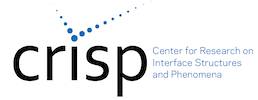Our kits are currently being reviewed and updated by a team of collaborative, innovative and interdisciplinary educators who wish to enhance the educational opportunities for students. These dedicated teachers are members of CRISP Collaborative Science for All (CCSA) as well as local educators.
Click to see the SCSU CRISP Module Template used by CCSA for improving and updating the CRISP demos and kits. Each kit page offers a CRISP developed teacher module and CRISP aligned standards (both NGSS and CCSS)
Kit Request form

Image courtesy of Christopher Down via Wikipedia
Ultraviolet (UV) light is a type of electromagnetic radiation from the Sun. UV light is all around us but our eyes can’t see it because the wavelength is so small. Even though it comes from the Sun, too much exposure can cause painful sunburns and even cancer. It is important for us to protect ourselves from these damaging rays. In this activity students will explore different scenarios, and using UV beads, investigating which methods of protection works best against the UV light.
Subject(s):
Ultraviolet light, Electromagnetic Radiation, Structure-Property Relationships
Objectives:
Students will understand that:
- The way a material behaves on the macro scale is affected by its structures on the nanoscale
- The UV beads in this activity change color as a result of nanoscale shifts in the shapes of their molecules
- There are ways to protect our skin from the damaging effects of the ultraviolet rays from the sun
Vocabulary:
Photochromic Dyes, Ultraviolet (UV), Molecules, SPF, Zinc Oxide, Electromagnetic Spectrum
Materials in this kit:
- Ultraviolet (UV) beads
- UV flashlight
- Pipe cleaners
- SPF 15 sunblock
- SPF 50 sunblock
- Polarized sheet
- Black construction sheet
- Q-tips or similar
- Small portion cups
- Glass beaker with water (optional)
Suggestions for the Teacher:
Safety:
UV flashlights can be harmful to the eyes. Have students use caution when using these flashlights. Do not shine light into eyes.
Additional Resources:
Ultraviolet Light Teacher Module_2016
Ultraviolet Light CRISP aligned standards
https://www.loc.gov/rr/scitech/mysteries/sunscreen.html
STEM Careers:
- Materials Scientist
- Optical Engineer
- Engineer
- Environmental Engineer
- Optician
- Solar Energy Systems Engineers
- Materials Engineers
- Mechatronics Engineers
- Nanosystems Engineers
- Nanotechnology Engineering Technologists
- Nanotechnology Engineering Technicians
Standards:
MS-PS4-2.
- Develop a model to describe that light reflecting from objects and entering the eye allows objects to be seen.
- Develop and use a model to describe that waves are reflected, absorbed, or transmitted through various materials.
PS4.A: Wave Properties
- A simple wave has a repeating pattern with a specific wavelength, frequency, and amplitude.
PS4.B: Electromagnetic Radiation
- An object can be seen when light reflected from its surface enters the eyes.
- When light shines on an object, it is reflected, absorbed, or transmitted through the object, depending on the object’s material and the frequency (color) of the light.
- However, because light can travel through space, it cannot be a matter wave, like sound or water waves.
CC-2 Cause and Effect
- Cause and effect relationships are routinely identified.
CC-6 Structure and Function
- Structures can be designed to serve particular functions by taking into account properties of different materials, and how materials can be shaped and used.
Interdependence of Science, Engineering, and Technology
- Science and engineering complement each other in the cycle known as research and development (R&D).
- Influence of Engineering, Technology, and Science on Society and the Natural World
SEP 2 – Developing and Using Models
- Use models to describe phenomena.
SEP 7- Obtaining, Evaluating and Communicating Data
- Communicate technical information or ideas (e.g. about phenomena and/or the process of development and the design and performance of a proposed process or system) in multiple formats (including orally, graphically, textually, and mathematically).
